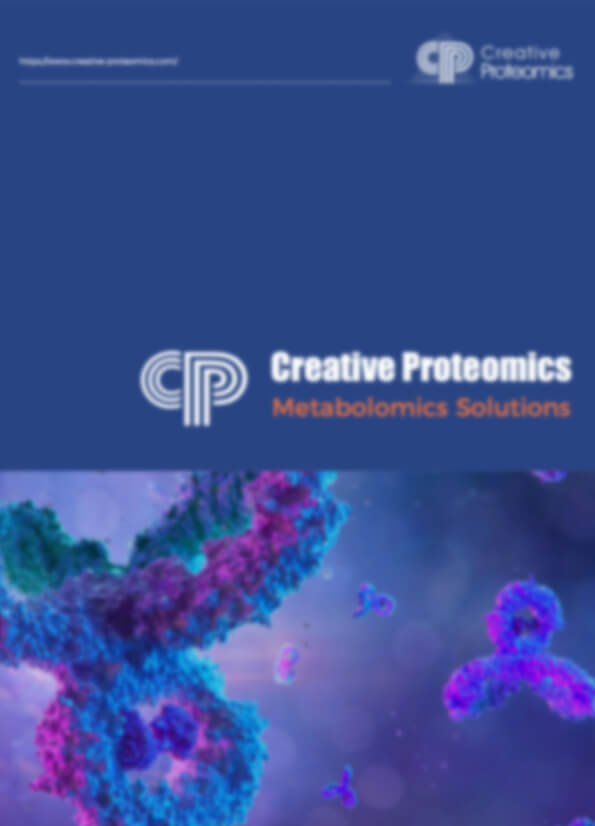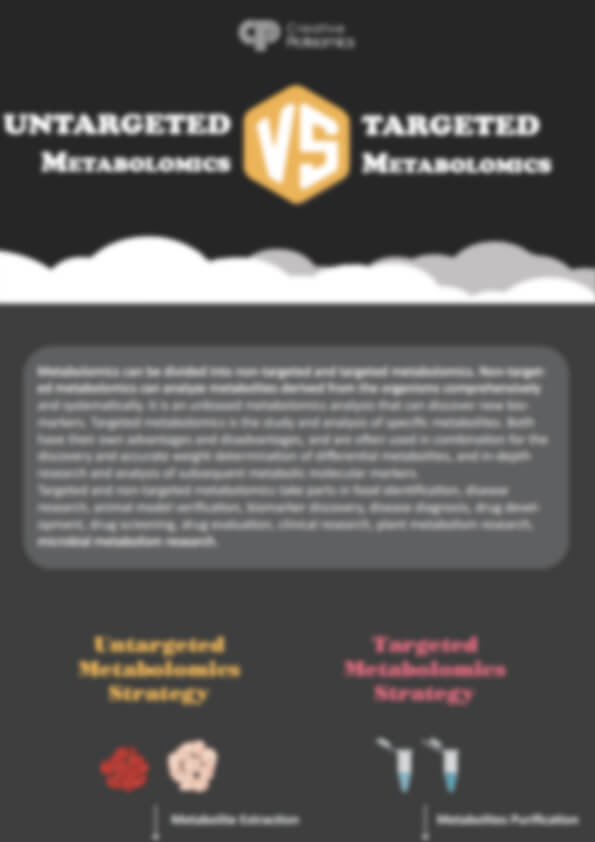Fumaric Acid Analysis Service
Accurate fumaric acid analysis is essential for ensuring product quality in food and pharmaceuticals, optimizing microbial fermentation, and advancing metabolic research. At Creative Proteomics, we provide quantitative analysis, purity testing, and metabolic pathway studies using advanced LC-MS and GC-MS platforms, delivering precise results to support quality control, regulatory compliance, and biotechnological innovation.
Submit Your Request Now
×- What We Provide
- Technology Platform
- Advantages
- Sample Requirements
- Demo
- FAQs
- Publications
What is Fumaric Acid?
Fumaric acid (C₄H₄O₄), also known as trans-butenedioic acid or allomaleic acid, is a naturally occurring dicarboxylic acid found in plants such as Fumaria officinalis and various fungi. It is a key intermediate in the tricarboxylic acid (TCA) cycle, playing a critical role in cellular energy production. With a white crystalline structure, low water solubility (0.63 g/100 mL at 25°C), and high thermal stability, it is widely used as a food additive for pH regulation and preservation. Beyond food applications, its derivatives are key in pharmaceutical therapies, while its role in microbial metabolism drives research into sustainable bio-based production methods. Accurate analysis ensures product safety, supports drug development, and optimizes biotechnological processes, advancing both scientific innovation and industrial efficiency.
Fumaric Acid Analysis Provided by Creative Proteomics
Fumaric Acid Quantitative Analysis: Precise measurement of fumaric acid concentrations in food, pharmaceuticals, biological samples, and industrial products.
Fumaric Acid Qualitative Identification: Confirmation of fumaric acid presence and differentiation from structural analogs (e.g., maleic acid).
Fumaric Acid Purity Testing: Assessment of fumaric acid purity in raw materials and finished products.
Metabolic Pathway Analysis: Investigation of fumaric acid's role in cellular metabolism, including TCA cycle flux studies.
Custom Method Development: Tailored protocols for unique sample types or specific research objectives.
Multi-Analyte Panels: Simultaneous quantification of fumaric acid alongside other organic acids or TCA intermediates (e.g., citrate, malate).
Fermentation Monitoring: Real-time analysis of fumaric acid production in microbial fermentation processes.
Stability Studies: Evaluation of fumaric acid degradation under various storage or processing conditions.
List of Detected Fumaric Acid and Related Compounds
| Compound | Detection Method | Application Area |
|---|---|---|
| Fumaric Acid | LC-MS, GC-MS, NMR | Metabolomics, Biochemistry |
| Glutamate | LC-MS, HPLC | Neurochemistry, Neurodegeneration |
| Glutamine | LC-MS, HPLC | Metabolism, Clinical Research |
| Succinic Acid | GC-MS, LC-MS | Energy Metabolism, Cancer Studies |
| Citrate | HPLC, LC-MS | TCA Cycle, Metabolic Studies |
| Malate | LC-MS, GC-MS | Biochemistry, Metabolism Studies |
Methods for Fumaric Acid Detection
High-Performance Liquid Chromatography (HPLC)
Instrument Model: Agilent 1260 Infinity II
Detection: UV/VIS or DAD Detector
Liquid Chromatography-Mass Spectrometry (LC-MS)
Instrument: Thermo Scientific Q Exactive HF-X Orbitrap
Key Parameters:
- Ionization: ESI-negative mode targeting [M-H]⁻ ion (m/z 115.02 for fumaric acid).
- Quantification: Linear range 0.1–500 µM with isotope-labeled internal standards (e.g., ¹³C-fumaric acid).
Advantages: Ultrahigh resolution (240,000 FWHM) distinguishes fumaric acid from isomers (e.g., maleic acid); ideal for complex matrices (biofluids, fermentation broths).
Gas Chromatography-Mass Spectrometry (GC-MS)
Instrument: Agilent 7890B GC with 5977A MSD
Key Parameters:
- Derivatization: Trimethylsilyl (TMS) derivatization enhances volatility.
- Separation: DB-5MS column (30 m × 0.25 mm) with gradient heating (50°C → 300°C).
- Detection: SIM mode for fragments (m/z 245, 147); detection limit ≤1 ppb.
Applications: Purity verification, plant extracts, and environmental samples.

Agilent 1260 Infinity II HPLC (Fig from Agilent)

Q Exactive™ HF-X Hybrid Quadrupole-Orbitrap™ Mass Spectrometer (Fig from Thermo Fisher)

Agilent 7890B Gas chromatography system (Fig from Agilent)
Advantages of Our Fumaric Acid Detection
- Ultrahigh sensitivity (detection down to 0.1 µM via LC-MS).
- Dual-platform validation (LC-MS & GC-MS) ensures 100% data reliability.
- Derivatization-free LC-MS protocol simplifies sample preparation for complex matrices.
- Isotope-labeled internal standards (e.g., ¹³C-fumaric acid) eliminate matrix effects.
- Structural specificity via high-resolution mass spectrometry (distinguishes fumaric acid from maleic acid).
- Customizable workflows for unique sample types (e.g., lipids, viscous matrices).
- Multi-industry compatibility (food, pharma, biotech, environmental).
- Cross-platform data cross-validation guarantees consistency (R² >0.99).
- Expert technical support from PhD-level analytical scientists.
Sample Requirements for Fumaric Acid Analysis
| Sample Type | Recommended Volume | Preparation Notes |
|---|---|---|
| Blood (Plasma/Serum) | 500 µL - 1 mL | Collect using EDTA or heparin tubes. Store at -80°C if not analyzed immediately. |
| Urine | 2 mL | Collect mid-stream urine in a sterile container. Store at -80°C if not analyzed immediately. |
| Tissue (Frozen) | 50 mg - 1 g | Flash freeze tissues in liquid nitrogen and store at -80°C until analysis. |
| Cell Culture | 1 mL | Harvest cells and immediately store at -80°C. |
| Environmental Samples | 10 mL (water) / 5 g (soil) | Collect in clean containers. For water, refrigerate; for soil, dry before analysis. |
Applications of Fumaric Acid Assay
Metabolomics
Profiling fumaric acid in biological samples to study metabolic pathways and disease biomarkers.
Food Industry
Monitoring fumaric acid levels for pH regulation, flavor enhancement, and ensuring product quality and safety.
Pharmaceuticals
Quantifying fumaric acid derivatives for purity assessment in autoimmune disease treatments.
Biotechnology
Analyzing fumaric acid in microbial fermentation processes to optimize bio-based production methods.
Environmental Monitoring
Detecting fumaric acid in water, soil, and air samples to assess pollution levels and environmental health.
Polymer Industry
Measuring fumaric acid as a precursor for the production of biodegradable polymers and sustainable materials.
Demo Result of Targeted Metabolomics Service
Figures come from (Li, Y.et.al, Sci Rep,2023)
FAQ of Fumaric Acid Analysis
How do I choose between LC-MS and GC-MS for my samples?
LC-MS is ideal for direct analysis of polar or thermally unstable samples (e.g., biofluids), while GC-MS suits volatile derivatives (e.g., plant extracts after derivatization). We recommend LC-MS for most cases due to its higher sensitivity and simpler preparation.
Can your methods detect fumaric acid in highly pigmented or viscous samples?
Yes. We use matrix cleanup protocols (e.g., solid-phase extraction) to remove pigments or lipids, ensuring accurate quantification even in challenging matrices like fermented beverages or oils.
What is the advantage of using isotope-labeled internal standards?
They correct for ion suppression/enhancement during LC-MS analysis, improving accuracy in complex samples (e.g., serum or plant extracts).
How do you handle samples with extremely low fumaric acid concentrations?
We employ preconcentration techniques (e.g., lyophilization for liquids or SPE enrichment) to boost signals below the standard detection limit.
Can I analyze fumaric acid alongside other TCA cycle intermediates (e.g., citrate, malate)?
Yes. Our multi-analyte LC-MS panels simultaneously quantify fumaric acid and 10+ TCA metabolites in a single run.
Why does GC-MS require derivatization for fumaric acid?
Fumaric acid's high polarity limits volatility. Derivatization (e.g., silylation) enhances thermal stability and improves chromatographic separation.
How do you ensure structural confirmation of fumaric acid?
We use tandem MS (MS/MS) to generate fragment ion spectra, matching them against reference standards for unambiguous identification.
Can your methods distinguish between natural and synthetic fumaric acid?
Yes. Natural fumaric acid often has isotopic or trace impurity profiles detectable via high-resolution LC-MS, enabling origin differentiation.
Can I submit samples in organic solvents (e.g., methanol, DMSO)?
Yes, but solvent compatibility must be verified. For example, >50% DMSO may require dilution to avoid LC column damage.
Learn about other Q&A.
Fumaric Acid Analysis Case Study
Publications
Here are some publications in Metabolomics research from our clients:

- Exogenous lipase administration alters gut microbiota composition and ameliorates Alzheimer’s disease-like pathology in APP/PS1 mice. 2022. https://doi.org/10.1038/s41598-022-08840-7
- UDP-Glucose/P2Y14 Receptor Signaling Exacerbates Neuronal Apoptosis After Subarachnoid Hemorrhage in Rats. 2024. https://doi.org/10.1161/STROKEAHA.123.044422
- Insect derived extra oral GH32 plays a role in susceptibility of wheat to Hessian fly. 2021. https://doi.org/10.1038/s41598-021-81481-4
- Neddylation is required for perinatal cardiac development through stimulation of metabolic maturation. 2023. https://doi.org/10.1016/j.celrep.2023.112018
- T cell Aryl Hydrocarbon Receptor Activity Tunes the Gut Microenvironment to Sustain Autoimmunity and Neuroinflammation. 2022. https://doi.org/10.1101/2022.04.19.488821














